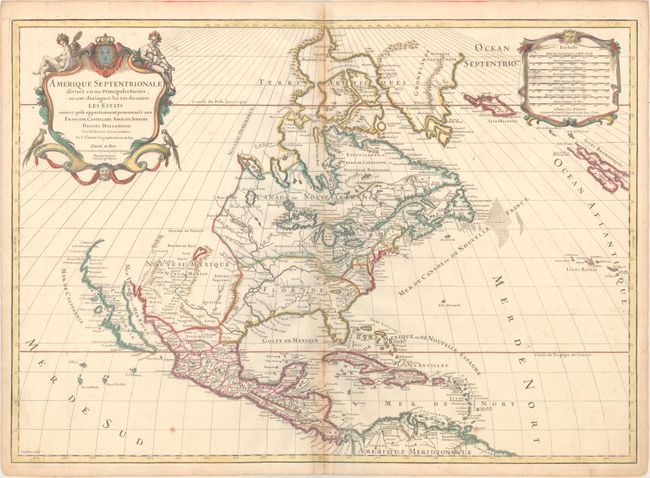Catalog Archive


Auction 163, Lot 30
Sanson/Jaillot's Map of North America
"Amerique Septentrionale Divisee en ses Principales Parties, ou sont Distingues les uns des Autres les Estats...", Sanson/Jaillot

Subject: Colonial North America
Period: 1719 (dated)
Publication: Atlas Francois
Color: Hand Color
Size:
25.3 x 18 inches
64.3 x 45.7 cm
Download High Resolution Image
(or just click on image to launch the Zoom viewer)
(or just click on image to launch the Zoom viewer)